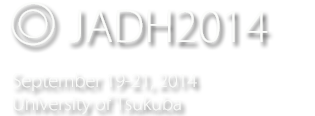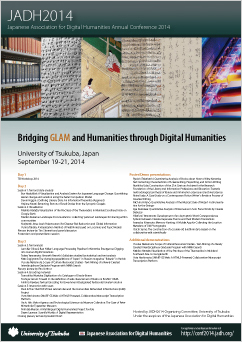Session 3-2
Kenneth Rexroth's Syllabism Studied by Statistical and Text Analysis
- Takeo Yamamoto (The University of Tokyo)
American poet Kenneth Rexroth (1905–1982) is known to have written syllabic poems in his middle and later years. However, it has not been clear when he started to write syllabic poetry, and the details of the development of his poetic style have not been studied. What led him to syllabism has never been clarified, either. Some have assumed that he adopted syllabism under the influence of Japanese poetry, as many of the imagists did. It has also been noted that he rarely kept to a single number of syllables per line throughout a poem. For this reason Rexroth's syllabism has sometimes been called “loose” but discussion of this aspect has progressed almost not at all.
In this study, I used a perl program to estimate the number of syllables in each verse (line) of all of his poems in The Complete Poems of Kenneth Rexroth, and another perl program to detect a potential accentual-syllabic meter in a poem. The results were then used, together with direct reading, to classify most of Rexroth's poems into three categories: syllabic, completely free, and accentual-syllabic. The above results together with the change in time of the most frequent values and the distribution of the number of syllables were used, together with textual analysis, in tracing the development of Rexroth's poetical style during his career of over sixty years. Similar computer-assisted methods have been used for quite some time to compare the styles of different poets and to scan a large number of accentual-syllabic poems, but to my knowledge such methods have not been used to analyze the development of the style of one poet who composed predominantly in syllabic meter over the course of his poetical career.
From the above analysis, the following results were obtained:
- The Homestead Called Damascus, which is Rexroth's first long poem and which he wrote mostly in his teens is, even this early, in syllabic meter. He experimented with more avant-garde styles of free verse twice in his lifetime, once in his youth (teens to about thirty) and later (in his late fifties), but both times came back to syllabism. This means that his commitment to syllabism was almost lifelong, and that Rexroth may be the link between the two generations of modern poets whose poetry demonstrates interest in syllabics: the imagists and the beat poets.
- The very first poem in The Complete Poems of Kenneth Rexroth is accentual-syllabic, but there are few other accentual-syllabic poems. Most of these are addressed to other poets who compose in traditional meter, whose styles Rexroth mimics in his poems.
- The direct influence of Japanese poetical style in his syllabic poetry is seen only in his late poetry (his late sixties to seventies.)
- Rexroth wrote only a few poems with an identical number of syllables per line of verse. This is rather remarkable for a poetical career largely spent in syllabism. The possible reasons for this are discussed.
- Keywords
- text processing, statistics on syllable-per-line, poetical style

